
BONE HEALTH - PREVENTING AND TREATING BONE DENSITY
What causes bone loss/bone density? Learn more about bone health
Although bones may seem like hard and lifeless structures, bones are living tissues with blood supply and active metabolism. Bones (bone health) respond to exercise and a healthy diet by becoming stronger. Strong bones are important for health. Bones make up our skeletons and provide structure and support for our bodies. However, bones also act as a storehouse for minerals that our bodies need, especially calcium. During a person's lifetime, the body constantly breaks down old bone (through a process called resorption) and builds up new bone. Any time old bone is broken down faster than new bone is made, net bone loss occurs. Bone loss can lead to low bone density (osteopenia), weakness of the bone, and eventually osteoporosis. This can lead to bone fractures (broken bones), even with minimal trauma.
Osteoporosis (or porous bone) is a disease in which bones become weak and fragile. Porous bones have increased fracture risk and are more likely to break. Osteoporosis is a serious disease that affects millions of people worldwide. Without prevention or treatment, osteoporosis can progress without pain or symptoms until a bone breaks (fractures). Fracture from weak bones commonly occurs in the hip, spine (vertebral), and wrist.
BM248 provides support for bone health and bone mass. May help with weak and brittle bone disorders, which can lead to bone fractures, height loss, curving of the spine, and back pain.
Bone loss occurs when more bone is resorbed than is formed by the body. Many factors determine how much old bone is resorbed and how much new bone is made. Some factors people have control over (such as diet), but some factors are out of their control (such as age).
Most new bones are added during childhood and teenage years. As a result, bones become larger, heavier, and stronger (denser). Bone formation continues until the peak bone mass (maximum solidness and strength) is reached. Peak bone mass (or bone density) is reached around age 30. After age 30, bone resorption slowly begins to exceed new bone formation. This leads to bone loss. Bone loss in women occurs fastest in the first few years after menopause, but bone loss continues into old age.
Women are more at risk of developing osteoporosis than men because the hormone changes that happen at the menopause directly affect bone density. The female hormone oestrogen is essential for healthy bones. After the menopause, oestrogen levels fall. This can lead to a rapid decrease in bone density.
Factors that can contribute to bone loss include having a diet low in calcium, not exercising, smoking and alcohol, and taking certain medications such as corticosteroids.
BM139 may help your body deal with issues related to rheumatoid arthritis, including inflammation of the joints.
Corticosteroids are medications prescribed for a wide range of diseases, including arthritis, asthma, inflammatory bowel disease, lupus, and other diseases. Corticosteroids may cause osteoporosis when used chronically.
Men are also at risk for bone loss. Even though bone loss usually occurs later in life compared to women, men can still be at high risk for osteoporosis. By age 65, men catch up to women and lose bone mass at the same rate. Additional risk factors such as a small body frame, long-term use of corticosteroids (which are medications prescribed for a wide range of diseases, including arthritis, asthma, Crohn's disease, lupus, and other diseases), or low testosterone (or sex hormone) levels can increase the risk of osteoporosis in men.

The link between anorexia nervosa and osteoporosis
Anorexia nervosa has significant physical consequences. Affected individuals can experience nutritional and hormonal problems that negatively impact bone density. Extremely low body weight in females can cause the body to stop producing estrogen, resulting in a condition known as amenorrhea, or absent menstrual periods. Low estrogen levels contribute to significant losses in bone density.
In addition, individuals with anorexia often produce excessive amounts of the adrenal hormone cortisol, which is known to trigger bone loss. Other problems, such as a decrease in the production of growth hormone and other growth factors, low body weight (apart from the estrogen loss it causes), calcium deficiency, and malnutrition, may contribute to bone loss in girls and women with anorexia. Weight loss, restricted dietary intake, and testosterone deficiency may be responsible for the low bone density found in males with the disorder.
Studies suggest that low bone mass is common in people with anorexia and that it occurs early in the course of the disease. Girls with anorexia may be less likely to reach their peak bone density and therefore may be at increased risk for osteoporosis and fracture throughout life.
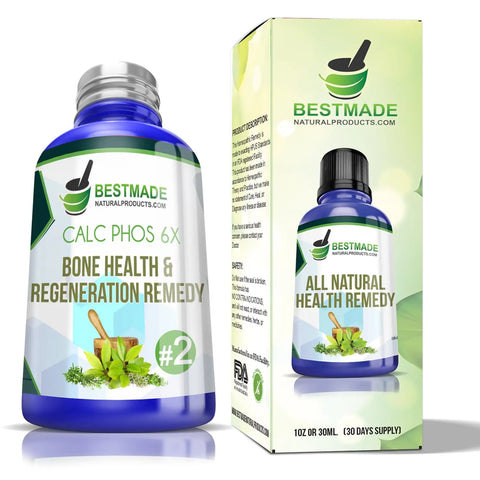
Calc Phos may help with feelings of exhaustion when recovering from an illness. Effective natural therapy for growth problems, including late tooth growth and broken bones. Useful for thin and anemic individuals.
The link between diabetes and osteoporosis
Individuals with Type 1 diabetes (the loss of insulin produced by the pancreas) or Type 2 diabetes (the body’s inability to use insulin and a slow loss of one’s ability to make insulin) have an increased risk of bone fractures and osteoporosis. Associated with decreased bone mass, women with Type 1 diabetes are 12 times more likely to have a fracture than women without diabetes. Although bone mass may or may not be decreased in those with Type 2 diabetes, there is evidence of altered bone quality. The duration of diabetes also plays a role as those living with the condition for more than 5 years tend to be at a higher risk for fractures and poor fracture healing.
Several factors affect the health of our bones, such as calcium, vitamin D and certain hormones. People with diabetes tend to have low vitamin D levels. Vitamin D is an important nutrient that helps the body absorb calcium, which is needed to maintain bone density. Elevated blood glucose levels lead to chronic inflammation which directly affects the quality and strength of the bone.
Poor absorption of vitamin D and calcium results in secondary hyperparathyroidism, which increases rates of bone loss. Low vitamin D levels or hypocalcemia can lead to osteomalacia (rickets), in which the new protein matrix, osteoid, remains unmineralized.

WHAT ARE THE SYMPTOMS OF BONE LOSS?
Usually, there are no symptoms of bone loss. That is why it is sometimes called a silent disease. However, you should watch out for the following things:
- Loss of height (getting shorter by an inch or more).
- Change in posture (stooping or bending forward).
- Shortness of breath (smaller lung capacity due to compressed disks).
- Bone fractures.
- Pain in the lower back.
HOW DO YOU TREAT LOSS OF BONE DENSITY?
Osteoporosis treatment may involve medication along with lifestyle change.
Which osteoporosis medications are usually tried first?
Bisphosphonates are usually the first choice for osteoporosis treatment. These include:
- Alendronate (Fosamax), a weekly pill
- Risedronate (Actonel), a weekly or monthly pill
- Ibandronate (Boniva), a monthly pill or quarterly intravenous (IV) infusion
- Zoledronic acid (Reclast), an annual IV infusion
Another common osteoporosis medication is denosumab (Prolia, Xgeva). Unrelated to bisphosphonates, denosumab might be used in people who can't take a bisphosphonate, such as some people with reduced kidney function.
Denosumab is delivered by shallow injections, just under the skin, every six months. If you take denosumab, you might have to do so indefinitely unless your doctor transitions you to another medication. Recent research indicates that there could be a high risk of spinal fractures after stopping the drug, so it's important that you take it consistently.
What are common side effects of bisphosphonate pills?
The main side effects of bisphosphonate pills are stomach upset and heartburn. Don't lie down or bend over for 30 to 60 minutes to avoid the medicine washing back up into the esophagus. Most people who follow these tips don't have these side effects.
Bisphosphonate pills aren't absorbed well by the stomach. It may help to take the medication with a tall glass of water on an empty stomach. Don't put anything else into your stomach for 30 to 60 minutes, after which you can eat, drink other liquids and take other medications.
Can osteoporosis medications hurt your bones?
A very rare complication of bisphosphonates and denosumab is a break or crack in the middle of the thigh bone. This injury, known as atypical femoral fracture, can cause pain in the thigh or groin that begins subtly and may gradually worsen.Bisphosphonates and denosumab can also cause osteonecrosis of the jaw, a rare condition in which a section of jawbone is slow to heal or fails to heal, typically after a tooth is pulled or other invasive dental work. This occurs more commonly in people with cancer that involves the bone — who take much larger doses of a bisphosphonate than those typically used for osteoporosis.
Can medication alone successfully treat osteoporosis?
Don't rely entirely on medication as the only treatment for your osteoporosis. These practices also are important:
- Weight-bearing physical activity and exercises that improve balance and posture can strengthen bones and reduce the chance of a fracture. The more active and fit you are as you age, the less likely you are to fall and break a bone.
- Good nutrition. Eat a healthy diet and make certain that you're getting enough calcium and vitamin D.
- Quit smoking. Smoking cigarettes speeds up bone loss.
- Limit alcohol. If you choose to drink alcohol, do so in moderation. For healthy women, that means up to one drink a day. For healthy men, it would be up to two drinks a day.
Red clover, Soy, Black cohosh, Horsetail, Acupuncture, Homeopathy, Tai chi, Melatonin, Traditional treatment, Prevention and many more.
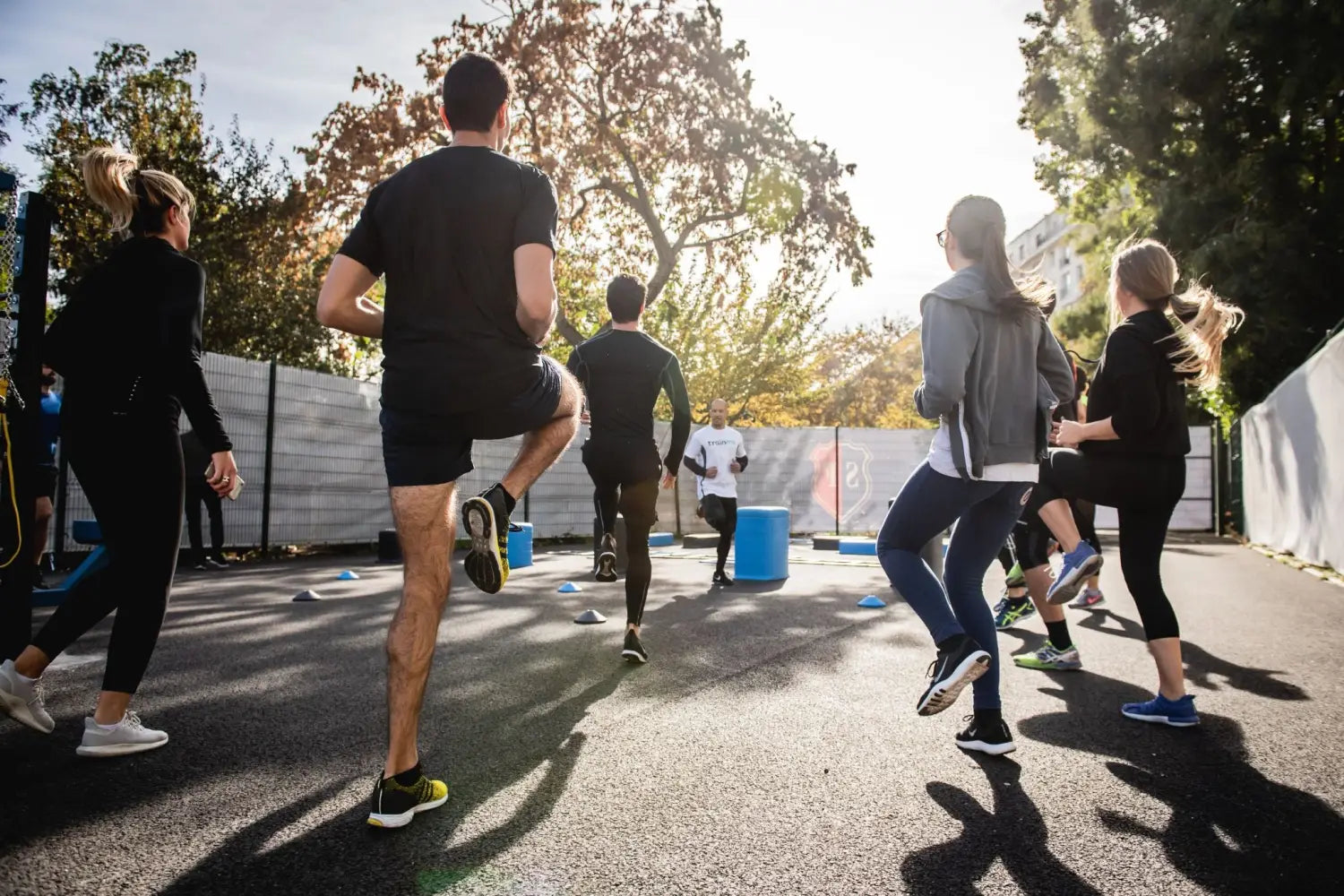
WHAT CAN YOU DO TO PREVENT BONE LOSS?
Many factors lead to bone loss. Some factors, such as age, cannot be controlled. However, simple steps can be taken to prevent or slow bone loss (see Prevention of Osteoporosis, Treatment of Osteoporosis, and Understanding Osteoporosis Medications).
Eat a Diet High in Calcium
Not getting enough calcium during a person's lifetime significantly increases the risk of developing osteoporosis. A low-calcium diet is associated with low bone mass, rapid bone loss, and broken bones (see Osteoporosis and Calcium). A diet high in calcium is important. Good sources of calcium include the following:- Low-fat dairy products, such as milk, yogurt, cheese, and ice cream
- Dark green leafy vegetables, such as broccoli, collard greens, and spinach
- Sardines and salmon with bones
- Tofu
- Almonds
Some foods have added calcium, such as orange juice, cereals, and bread. Calcium supplements are also available.
Eat a Diet High in Vitamin D
Vitamin D is important for the body to absorb calcium from the diet. Without enough vitamin D, people are unable to absorb calcium from the foods they eat. When not enough calcium is absorbed from foods, the body has to take calcium from the bones, causing bone loss and leading to weaker bones.
Vitamin D comes from two sources. Vitamin D is made in the skin through direct exposure to sunlight, and it comes from the diet. Many people get enough vitamin D naturally. It is also found in fortified dairy products, egg yolks, saltwater fish, and liver. However, vitamin D production decreases in older people, in people who are housebound, and during the winter. These people may need vitamin D supplements to ensure a daily intake of 400-800 IU of vitamin D.
Exercise
Physical activity during childhood and adolescence increases bone density and strength. Children who regularly exercise are more likely to reach their peak bone density (maximum strength and solidness) than those that do not exercise. People who reach their peak bone density, which usually occurs by age 30 years, are less likely to have a significant bone loss that leads to osteoporosis.
The best exercise to prevent bone loss is a weight-bearing exercise that works against gravity. These kinds of exercises include walking, hiking, jogging, climbing stairs, playing tennis, and dancing. The second type of exercise is resistance
Elderly people, people with osteoporosis, and people who have not exercised for most of their adulthood should check with their health-care provider before beginning any exercise program.
Quit Smoking
Smoking is bad for the bones as well as for the heart and the lungs. Women who smoke have lower estrogen levels compared to women who do not smoke. Lower estrogen levels lead to increased bone loss. Women who smoke often go through menopause earlier. Remember that bone loss is most rapid in the first few years after menopause, but it continues even in the postmenopausal years. This means that the earlier menopause occurs, the more years bone loss is experienced and the weaker the bones will become over time. Men and women who smoke may absorb less calcium from their diets. Less calcium from the diet means the body breaks down the bones for the calcium it needs, which leads to bone loss.
Limit Alcohol Intake
Regular consumption of 2-3 ounces of alcohol a day may be damaging to bones, even in young women and men. Heavy drinkers are more likely to have bone loss and fractures. This is related to both poor nutrition and increased risk of falling. However, some evidence indicates that moderate alcohol intake may have beneficial effects on bone mass.
The positive side about bone loss is not only that we can effectively treat it, especially if we find out soon enough, we can also prevent it.
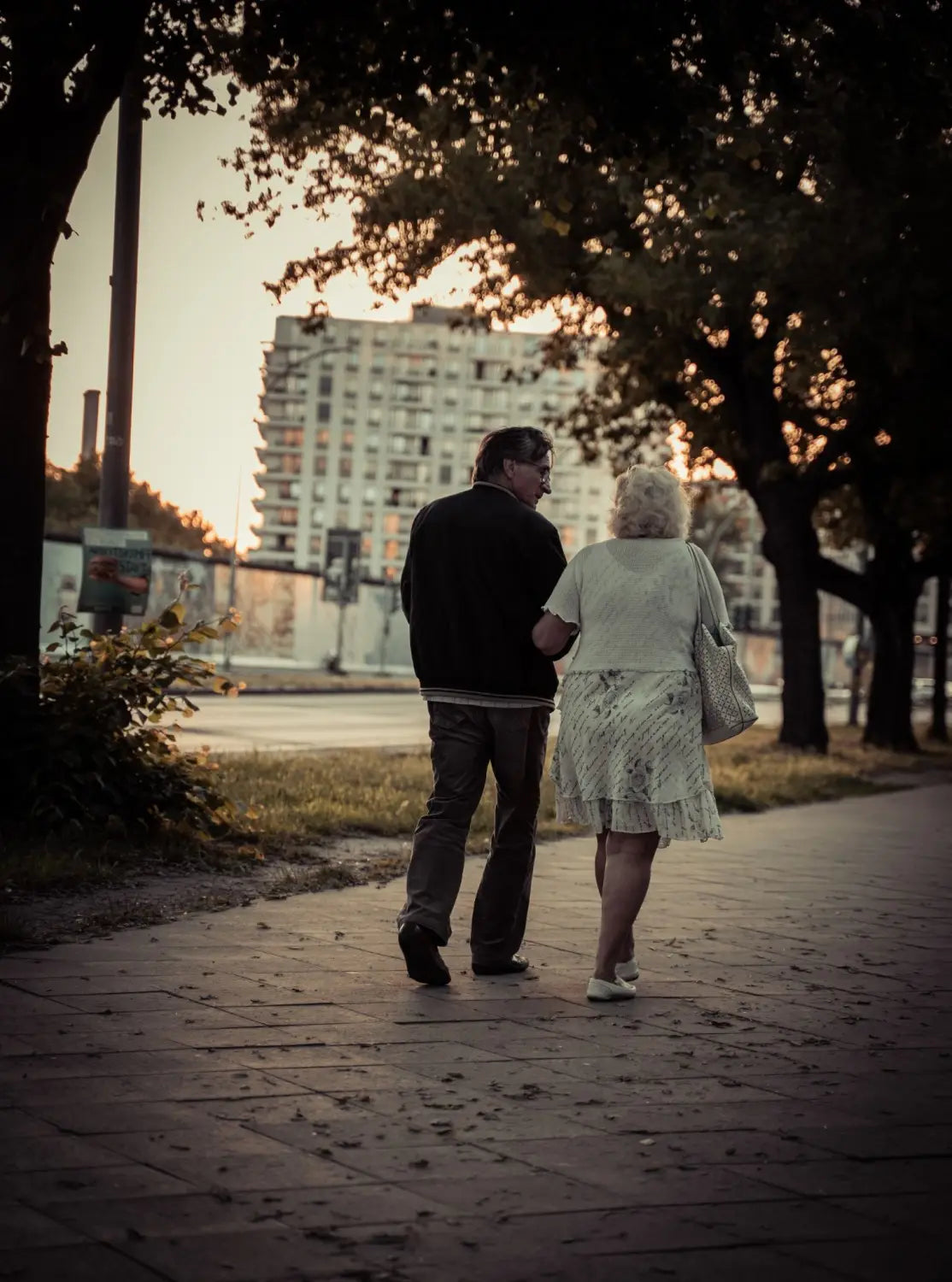
Calc Phos may help with feelings of exhaustion when recovering from an illness. Effective natural therapy for growth problems, including late tooth growth and broken bones. Useful for thin and anemic individuals.BM140 provides effective natural support for spine health. Useful for shoulder, scapula, waist, or hip pain and inability to move.BM81 is formulated to improve the function of the marrow system.



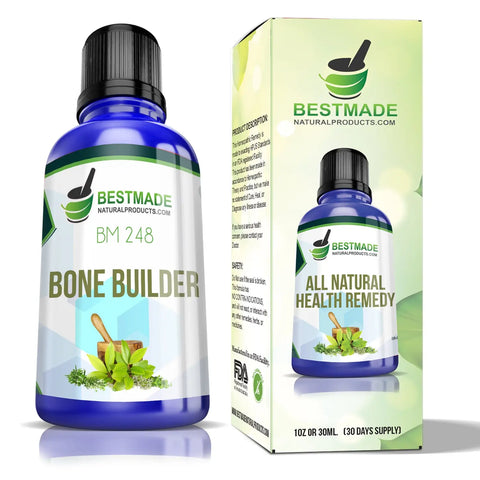

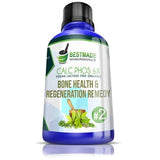
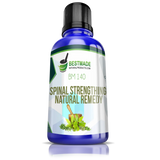
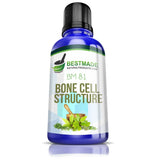
Deixe um comentário